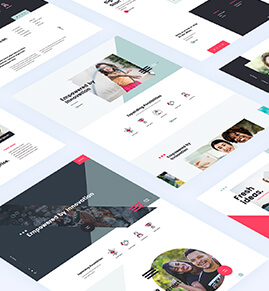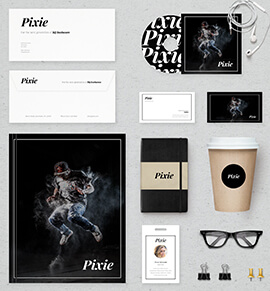Make your life easier as a web designer. Learn how to educate your clients on web design to make the design process more successful for you & your clients.
5 Steps on How to Educate Clients on Web Design

How to Educate Clients on Web Design
Updated 14.09.2019
Should you Educate Clients on Web Design
There are some web designers who wonder why it is necessary to learn how to educate clients on web design. The fact is, many clients don’t fully understand what designers do, which leads to them not trusting them as much as necessary. In many cases, designers are so worried about losing their client that they give them the idea they know best, even if it is not the case. The designer is the one who knows what to do and how to do it. Therefore they should not be threatened by unreasonable requirements or tricky questions from clients. However, it can also be difficult to help clients understand what is going on and why it is best to leave the business of design to the professionals. When a designer is struggling to stay in charge of a project, they should use the tips here to learn how they can educate their clients while keeping them happy and satisfied.
Design Isn’t Involved in Everything
When a designer is hired, clients are going to care about more than just the design skills a person has. They are also looking for a way to solve a specific issue they are having. This can be related to conversions, traffic or something else. The goal is to find a solution that will eliminate all the concerns they have. Once the designer is able to prove to their client that all their needs can be met, their stress level will be reduced somewhat. Rather than being an untrustworthy business partner, the designer will be an ally.
Improve Communication
In most cases, a web designer’s client will provide a brief to them that explains the issue and list the expectations. At this point, the designer needs to develop their own, unique ideas on how to solve the issue. Once the ideas are created, they should be wrapped up nicely and communicated to the client with non-technical language. This will ensure the client will share the vision the designer has and be able to identify with their objectives. This is a critical step that goes into creating a trustful relationship. Also, this will provide the designer with the peace of mind that they can be creative without being disturbed by the client every 30 minutes.
Remember the Web is Not Print
There are some clients who don’t understand that the web is different than print media. They also don’t understand that there is no way to transfer on the screen what is drawn on paper. This can be difficult to handle. This is fairly common for those who don’t know about design, but there are ways to help them understand. In these situations, it is best to be patient and give them the information they want and need. This will help ensure they have a realistic understanding of what will be done for their business.
Set Expectations Prior to Managing Them
Be sure to summarize the offers, terms of use, timelines, best practices and communication methods with every client. This may take some time to break down the working practices, but it will be well-worth it in the long run. When a client understands what they are paying for, and how the design company works, they will be comfortable with them taking the reins.
Create a Policy for No Last Minute Changes
Any experienced designer understands that last minute changes can completely break a timeline. It is important to establish a “no last minute change” policy with clients. This will ensure the initial plan is stuck to. If a client absolutely insists on a change, be sure they understand there is an additional fee involved. This will compensate for the additional time required. When it comes time for a web designer educate clients, it must be done carefully. In some cases, it will be beneficial for a designer to have a process in place from beginning to end. This will make sure the client understands what is expected of them and what the designer will do. Having a clearly designed process will pay off and help ensure a project runs smoothly. Failure to create these requirements can lead to projects that drag on forever and in business and client relationships that simply don’t work out to everyone’s best interest.
Ready to start a Web Design Project with a New Client?
As a web designer it is always exciting to be able to welcome a new client. There are several steps this introductory process can take. First of all do not hesitate to get to know your client better. Ask a little about their personal preferences, their family life and tastes. Get to know them. This will also provide the opportunity, in the cast of a business, to discover who makes the decisions, who pays bills and who you need to deal with. A kind of housekeeping list to complete.
When it comes time for a web designer to educate a new or even existing client, it must be done carefully. In some cases, it will be beneficial for a designer to have a process in place from beginning to end. This will make sure the client understands what is expected of them and what the designer will do. Having a clearly designed process will pay off and help ensure a project runs smoothly. Failure to create these requirements can lead to projects that drag on forever and in business and client relationships that simply don’t work out to everyone’s best interest.
To add to a web designer competence there are certain steps to take to be able to quote for a project. Gather as much information as possible about the project. If it’s a refresh of a site make sure you get logins in order to take a peak under the bonnet so to speak so as not to face unpleasant and expensive surprise at a later stage.
Make sure you know how many page templates need to be designed and how many pages of existing content will need to be migrated from the old site if this is required. A wireframe of the home page will help you discover how complex the site will be and a comprehensive site map will advise you on templates and inner page requirement.
Once your quote has been accepted there are a number of steps you should make a note of. Here is a great article that provides you with an excellent analysis of what to is required for a sophisticated web design process. Of course for many freelance web designers several of these steps are out of their scope of expertise or in most cases the fees they can charge their clients cannot in any way cover the work involved.
Regrettably web design has become such a commodity that clients are under the impression that a wand can be waved and a website magically will appear. And for waving a want a fee of $200 is more than enough. As any web designer knows, and even those creating their own website using such ‘easy’ online services as Suarespace or Wix, a website is anything but easy and completed in a wand wave. It takes considerable knowledge, application and hard work to be able to deliver a professional website. And why would you have anything else?
Let's Get Started
Let's work together
Schedule an exploratory call to discuss your requirements and to see whether it’s a good fit for you.






